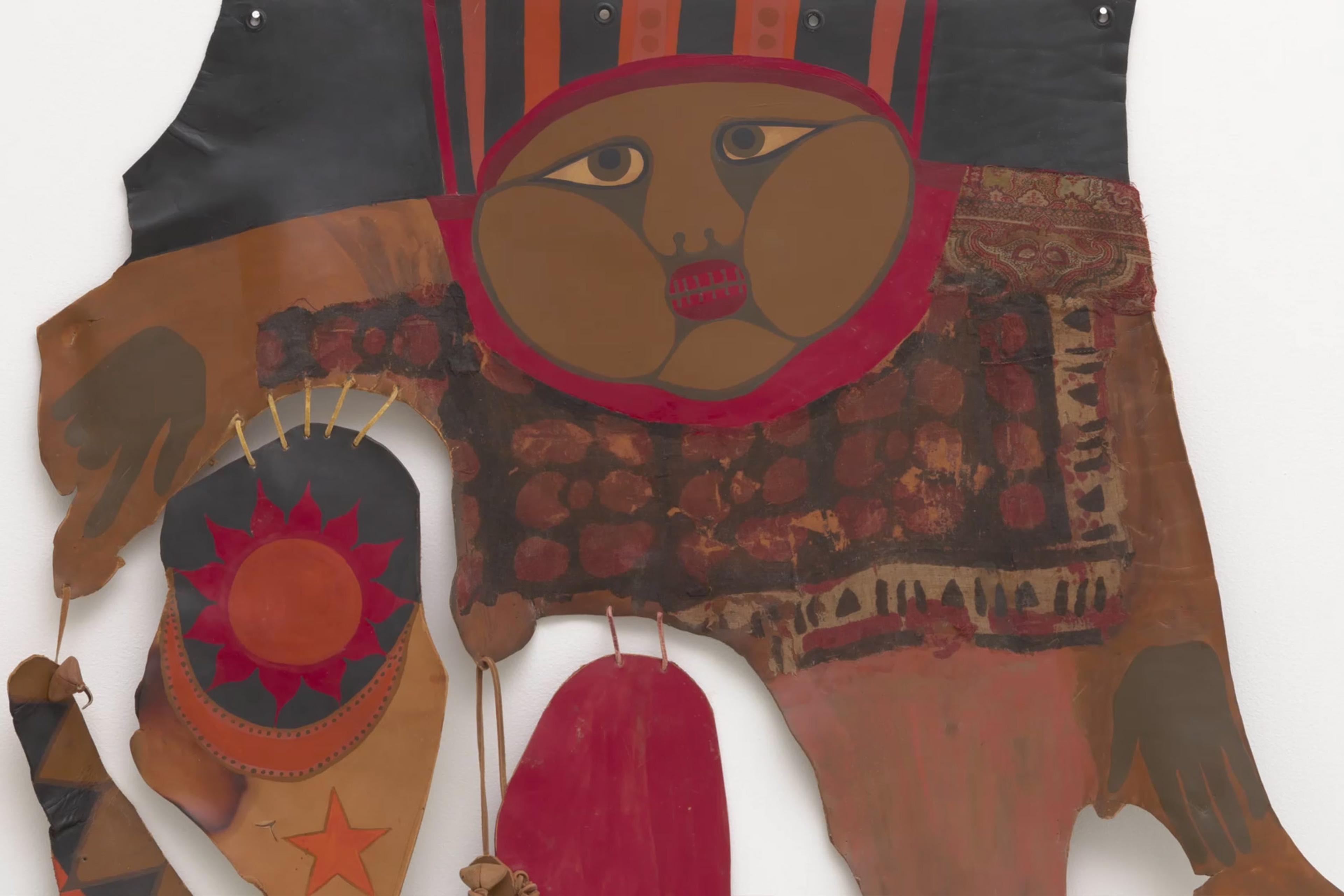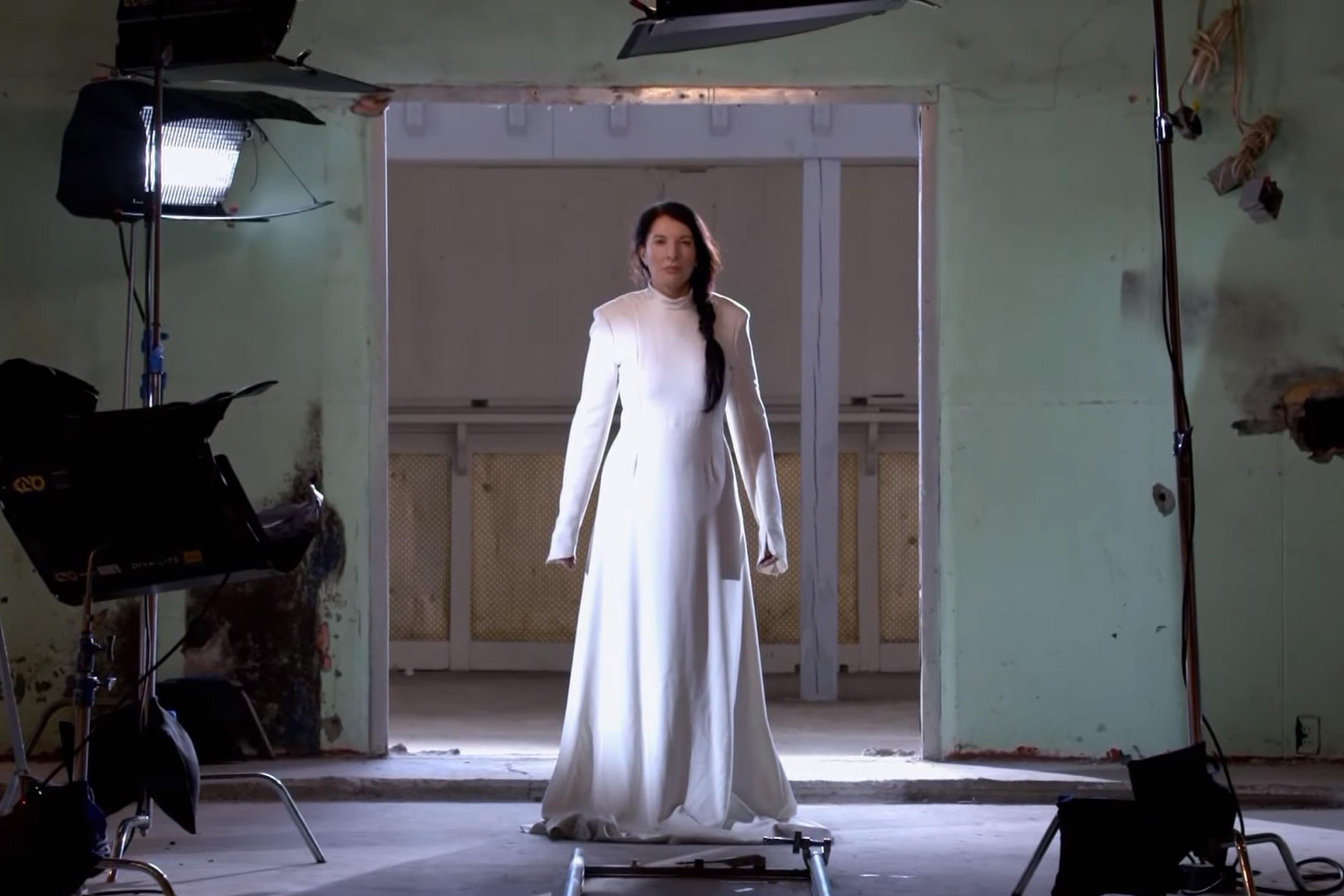The Kenyan American artist Wangechi Mutu describes herself as ‘a city girl with a nature brain’. Much of her work is concerned with, if not bridging chasms and resolving contradictions, carving out space to contemplate them. The short documentary Wangechi Mutu: Between the Earth and the Sky opens with her collecting a piece of wood from outside her studio in Nairobi and combining it with other organic materials to form an entry in her ‘Sentinel’ series (2016-present). Drawing from her background in collage, Mutu blends mostly found objects for her sculptures, creating powerful, preternatural female figures that seem at once rooted to and bursting forth from the ground. The tension in these pieces extends beyond the disparate materials themselves and the fashioning of natural objects to otherworldy artistic ends. For Mutu, the sentinels comment on the millennia-old ‘schism’ of societies that celebrate divine femininity while at the same time denigrating earthly women.
Growing up in what she calls a deeply Christianised Kenya, Mutu has long experienced – and indeed, inhabited – the contradictions where her artistic sensibilities can flourish. As a child, she would play for hours in her family’s garden, forging a lifelong connection with the soil. At her Catholic all-girls school, however, she studied British literature, learning very little about the richness of her own heritage. After training at the Cooper Union in New York City, she established herself as an up-and-coming artist in the United States, where she now spends half her time. As US art institutions have sought to expand beyond their historically narrow male and Eurocentric perspectives, she now finds her art in high demand – an inversion from her youth that reflects a changing art world, if not a changing culture.
In 2019, four bronze sculptures comprising Mutu’s work The NewOnes, will free Us became the first pieces to occupy long-vacant niches at the entrance of the Metropolitan Museum of Art in New York. There’s a stirring dissonance to the display. Afrofuturistic figures are cast against the museum’s neoclassical facade in spaces that, built in 1902, were no doubt intended for very different pieces. Mutu conceived of the figures as reimagined caryatids – female forms that, in the Western tradition, supported buildings and, in the African tradition, bore loads on the staffs and stools of royals. One needn’t look hard to find the culture-spanning metaphor.
Part of the ongoing documentary series by the nonprofit organisation Art21 profiling contemporary artists, Wangechi Mutu: Between the Earth and the Sky scopes Mutu’s accomplished career, spotlighting her aforementioned sculptures as well as her early collage paintings. While her art has expanded in scale and ambition over time, she continues to mine complexities and contradictions of identity, and especially femininity, which she calls a ‘source of eternal inspiration’. These themes are often accompanied by an elevation of the natural world, bringing to mind the ‘schism’ of reverence and abuse the planet receives from its human inhabitants. For Mutu, this focus on the overlooked and denigrated is central to her core belief that all life should be revered. Reflecting on her body of work, she says: ‘I’m trying to just push up the volume on how incredibly important every single plant, and animal, and human is in keeping us all alive and afloat.’
Written by Adam D’Arpino







